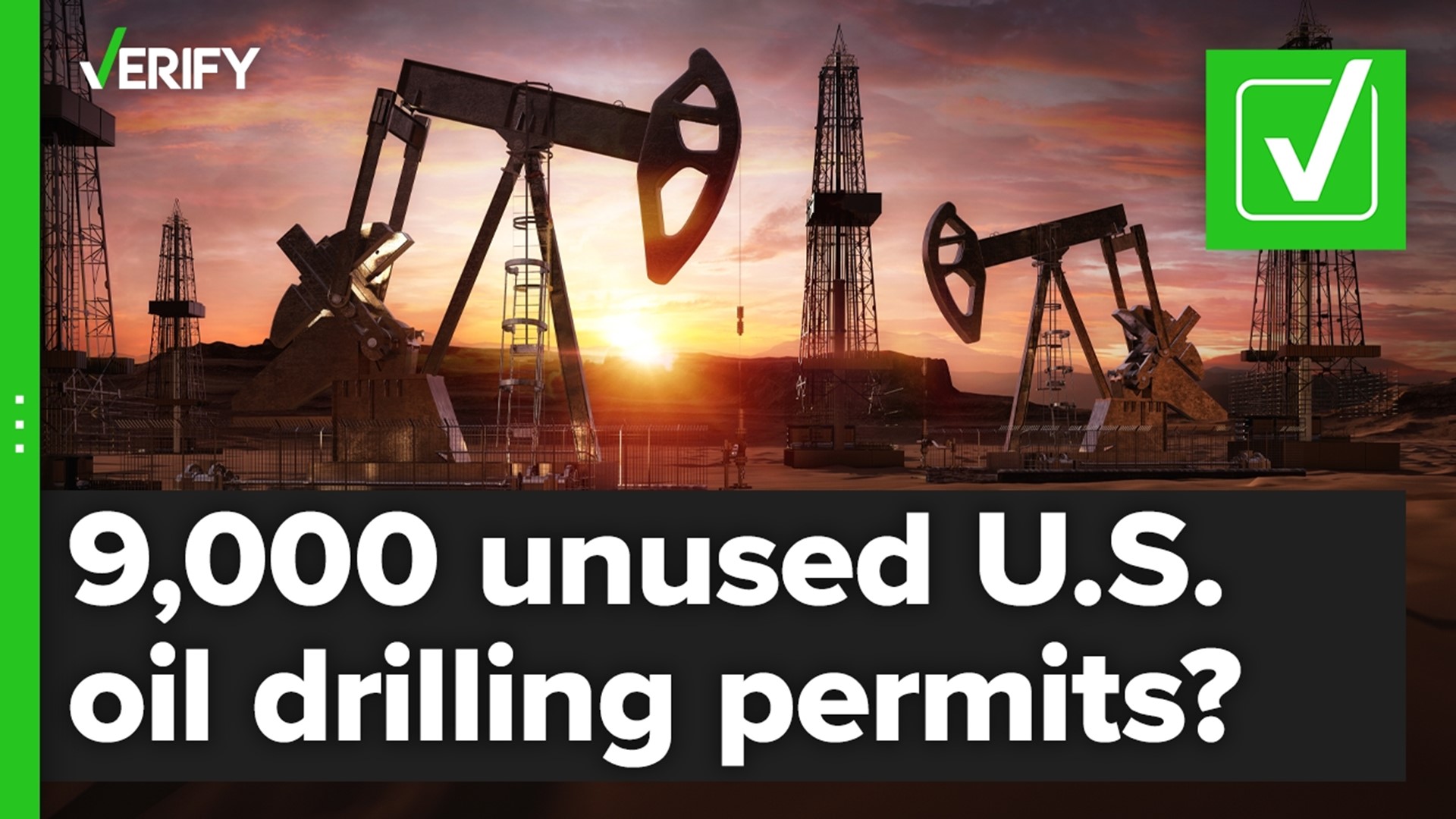UPDATE: On March 31, President Joe Biden announced the release of 1 million barrels of oil per day from the nation’s Strategic Petroleum Reserve over the next six months. Biden again reiterated that there are 9,000 unused oil drilling permits on federal lands, and called on Congress to make oil companies pay fees on wells from leases that they "haven't used in years and on acres of public lands that they are hoarding without producing." The original story continues as written below:
Gas prices are still near record highs throughout the United States, leading some to claim that the oil industry could increase its production in the U.S. right now.
On March 8, President Joe Biden announced a ban on Russian oil imports to the U.S. and called on companies to drill more domestic oil from federal lands.
“They have 9,000 permits to drill now. They could be drilling right now, yesterday, last week, last year,” Biden said.
Twitter users have also claimed that oil companies are refusing to use 9,000 drilling leases.
THE QUESTION
Can U.S. oil companies begin drilling right now in 9,000 permitted locations?
THE SOURCES
- U.S. Bureau of Land Management
- Independent Petroleum Association of America
- Western Energy Alliance
- Ed Hirs, University of Houston Energy Fellow
- U.S. Government Accountability Office
THE ANSWER
This claim needs context. While more than 9,000 approved permits to drill on federal lands aren’t producing oil and gas, that doesn’t mean companies could start drilling right now in all of those locations. Regulatory processes, court decisions and oil prices all play a role in when drilling can actually begin.
WHAT WE FOUND
Only about 10% of domestic oil and gas drilling occurs on federal land. The rest happens on private and state property, Ed Hirs, energy fellow at the University of Houston, said. At the end of 2021, there were 9,173 approved applications for drilling permits on federal and tribal lands, according to the Bureau of Land Management (BLM).
Jennifer Pett with the Independent Petroleum Association of America (IPAA), which represents independent oil and natural gas producers, told VERIFY that more than 9,000 approved permits aren’t producing oil and gas right now. Joshua Axelrod with the National Resources Defense Council also confirmed that more than 9,000 approved permits are unused.
However, that doesn’t mean oil companies could just start drilling right now and produce oil and gas.
According to the IPAA, some of these leases are going through a “complex regulatory process or are held up in litigation.” Western Energy Alliance, which represents hundreds of companies involved in the exploration and production of oil and natural gas, says on its website that it is defending more than 2,200 leases in court, most of which cannot be developed while the cases are ongoing.
Hirs explained that a variety of factors can halt the oil drilling process for unused permits.
“Federal leases…are subject to environmental studies. They're also subject to lawsuits filed by neighbors, by municipalities, by counties and state governments. And so it's become a more arduous process,” he said.
Companies often need to have separate permits secured for multiple well sites before they can bring in an oil rig, the IPAA says. But just because the government approves the permits doesn’t guarantee the well will produce oil and gas, as some never do. This means approved permits may go unused.
“If you've gone, like most companies do, and filed a dozen or two dozen [permits] at a time, and your first well turns out to be a dry hole, you're not going to go ahead and drill the rest of those,” Hirs said.
It’s true that companies will sometimes sit on unused permits until it makes more financial sense. The U.S. Government Accountability Office (GAO) found that since there isn’t a penalty for not using a drilling permit, some companies wait to begin drilling until oil prices are high enough to make it worth their while. One operator told the GAO that they would add a drilling rig if the price of oil increases and may suspend one if it decreases. Another said a permit may go unused if oil and gas prices are too low for them to turn a profit.
The COVID-19 pandemic continues to pose challenges for oil companies, too. Some are facing a six-month waiting period for piping materials needed to drill and are still short-staffed after layoffs spurred by the pandemic-induced drop in demand for oil, Pett said.

